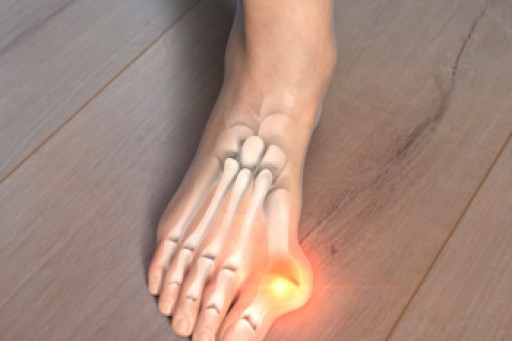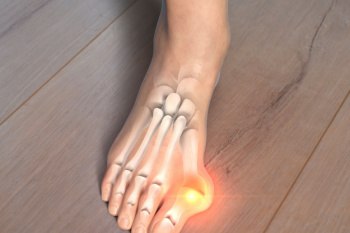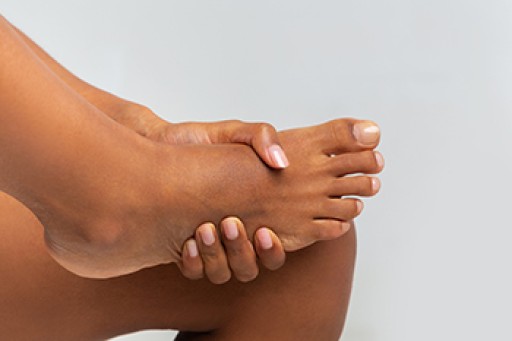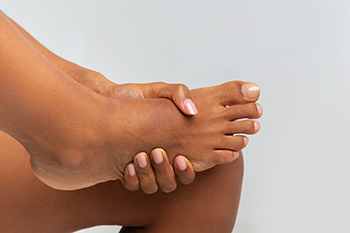
A stubbed toe occurs when the toe forcefully contacts a hard surface, often causing sudden pain and discomfort. This common injury typically happens when the toe collides with furniture, a door frame, or any other solid object. The impact can lead to immediate swelling, bruising, and sometimes a visible injury such as a cut or scrape. While a stubbed toe is usually not severe, it can cause significant pain and difficulty walking. In some cases, the trauma might lead to a fracture or dislocation, which requires medical attention. To manage a stubbed toe, keeping the foot elevated assists in minimizing inflammation. Proper rest and avoiding pressure on the affected toe are essential for a swift recovery. If you have stubbed your toe and it is causing extreme or persistent pain, it is suggested that you promptly consult a podiatrist who can perform an accurate diagnosis to rule out a toe fracture.
Foot Pain
Foot pain can be extremely painful and debilitating. If you have a foot pain, consult with Vincent, Vess from Fourth River Foot & Ankle. Our doctor will assess your condition and provide you with quality foot and ankle treatment.
Causes
Foot pain is a very broad condition that could be caused by one or more ailments. The most common include:
- Bunions
- Hammertoes
- Plantar Fasciitis
- Bone Spurs
- Corns
- Tarsal Tunnel Syndrome
- Ingrown Toenails
- Arthritis (such as Gout, Rheumatoid, and Osteoarthritis)
- Flat Feet
- Injury (from stress fractures, broken toe, foot, ankle, Achilles tendon ruptures, and sprains)
- And more
Diagnosis
To figure out the cause of foot pain, podiatrists utilize several different methods. This can range from simple visual inspections and sensation tests to X-rays and MRI scans. Prior medical history, family medical history, and any recent physical traumatic events will all be taken into consideration for a proper diagnosis.
Treatment
Treatment depends upon the cause of the foot pain. Whether it is resting, staying off the foot, or having surgery; podiatrists have a number of treatment options available for foot pain.
If you have any questions, please feel free to contact our offices located in Pittsburgh, White Oak, and McKeesport,PA . We offer the newest diagnostic and treatment technologies for all your foot care needs.
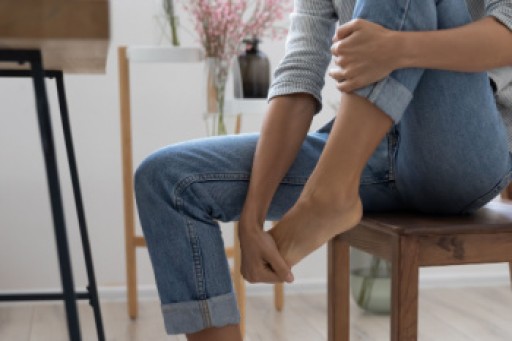
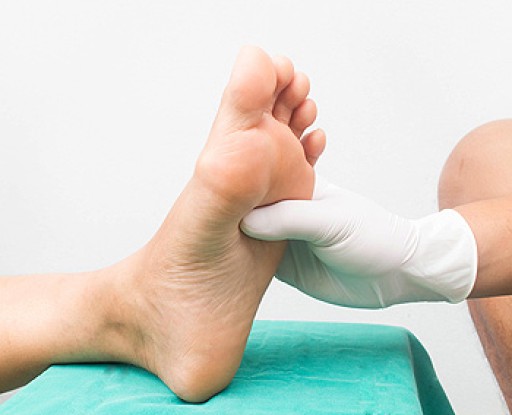
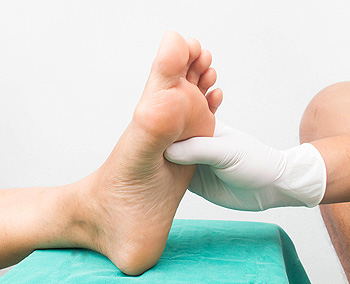 Diabetic foot
Diabetic foot

